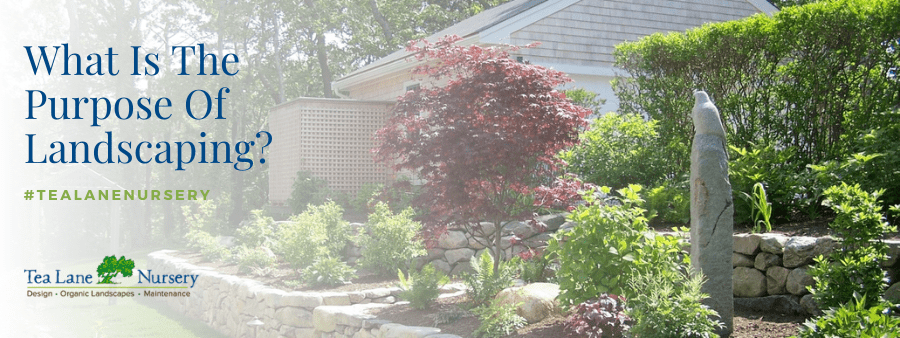All About Hilton Head Landscapes
All About Hilton Head Landscapes
Blog Article
The Ultimate Guide To Hilton Head Landscapes
Table of ContentsHilton Head Landscapes Fundamentals ExplainedUnknown Facts About Hilton Head LandscapesHow Hilton Head Landscapes can Save You Time, Stress, and Money.How Hilton Head Landscapes can Save You Time, Stress, and Money.The Ultimate Guide To Hilton Head LandscapesThe Ultimate Guide To Hilton Head LandscapesWhat Does Hilton Head Landscapes Do?
Line produces all types and patterns and can be utilized in a variety of means in the landscape. Line in the landscape is produced by the edge in between 2 materials, the summary or shape of a type, or a long direct feature. Lines are an effective tool for the designer due to the fact that they can be utilized to develop a boundless variety of shapes and forms, and they manage activity of the eye and the body.

Lines can have several characteristics, such as those defined below, however they normally serve different functions. Number 1. Lines in the landscape - landscapers hilton head island. The properties of lines determine exactly how individuals respond to the landscape, both emotionally and literally. Straight lines are architectural and powerful; they produce an official character, are normally related to an in proportion design, and lead the eye directly to a prime focus.
Some Known Factual Statements About Hilton Head Landscapes
Straight lines are frequently located in hardscape sides and material. Rounded lines create an informal, natural, unwinded character that is connected a lot more with nature and unbalanced equilibrium. Bent lines relocate the eye at a slower rate and add mystery to the area by creating hidden sights. Upright lines relocate the eye up, making an area really feel bigger.
Upright lines in the landscape consist of tall, slim plant material, such as trees, or tall frameworks, such as an arbor or a bird house on a pole. Horizontal lines relocate the eye along the ground plane and can make a space feel bigger. Low lines are much more subdued and develop a sensation of remainder or repose.
Some Known Factual Statements About Hilton Head Landscapes
Lines are additionally developed by the upright kinds of developed features and plant material. There are 3 key line kinds that produce kind in the landscape: bedlines, hardscape lines, and plant lines.
Bedlines connect plant product to your home and hardscape since the eye adheres to the line, relocating the stare through the landscape. Hardscape lines are developed by the side of the hardscape, which delineates the developed framework. Line can additionally be created by lengthy and narrow products, such as a fencing or wall.
The 7-Minute Rule for Hilton Head Landscapes
Kind is found in both hardscape and plants, and it is usually the dominant visual aspect that spatially organizes the landscape and often identifies the style of the garden. The form of structures, plant beds, and garden accessories additionally figures out the general kind style of the yard. Formal, geometric kinds consist of circles, squares, and polygons.
Plants create form in the yard through their lays out or silhouettes, however type can also be defined by a void or unfavorable space in between plants - Landscaping bluffton sc (https://www.metal-archives.com/users/h1tnhdlndscps). Circles can be full circles, or they can be divided right into half circles or circle sectors and integrated with lines to produce arcs and tangents
Facts About Hilton Head Landscapes Revealed
Circles can likewise be stretched into ovals and ellipses for more variety and interest. Circles are a solid style type due to the fact that the eye is constantly attracted to the center, which can be utilized to highlight a prime focus or connect other types. Figure 2. Round forms in hardscape and grass panels.
The square type can likewise be segmented and pre-owned continuously to produce a grid pattern. Unlike circles, squares are more powerful on the sides, which can be aligned or overlapped to produce one-of-a-kind patterns and even more intricate forms. Polygons are many-sided types with straight edges. Triangulars, for example, are three-sided polygons.
Meandering lines often simulate the natural training course of rivers or streams and can be explained as smooth lines with deeply rounded undulations. Twisting lines (Figure 3) function well for pathways, plant bedlines, and completely dry stream beds. Meandering lines can add rate of interest and enigma to a garden by leading viewers around edges to uncover brand-new views and areas.
Hilton Head Landscapes Fundamentals Explained

Common plant forms are well established and standard, as kind is the most regular and well-known feature of plants. Type can additionally be developed via the massing of plants, where the general mass creates a different form than an individual plant.
A very contrasting form needs to be utilized with careone or 2 work well as a centerpiece, however too several wreak havoc. All-natural plant forms, instead than over-trimmed types, should develop the bulk of the composition. The importance of total kind is essentially dependent on the seeing perspectivethe kind of a tree can show up rather various to a person standing under the cover versus viewing the tree from a range in an open field.
Not known Factual Statements About Hilton Head Landscapes
Plant types additionally produce and specify deep space or open rooms between the plants, producing either convex or concave kinds in deep spaces. High-arching tree branches normally produce a concave open room their website under the branches, and a round canopy with low branches fills the space to produce a convex kind in the open space under the tree.

Report this page